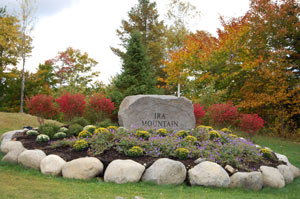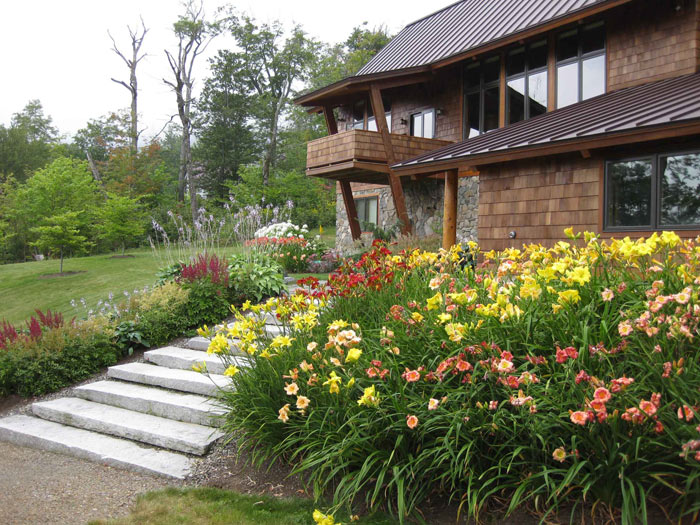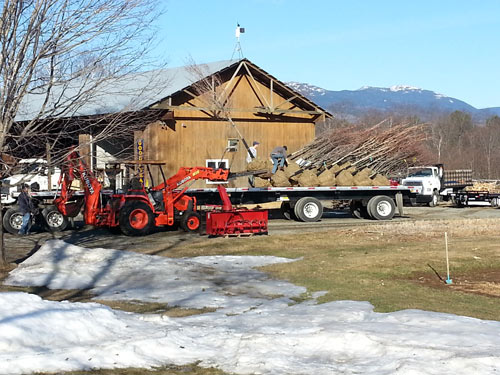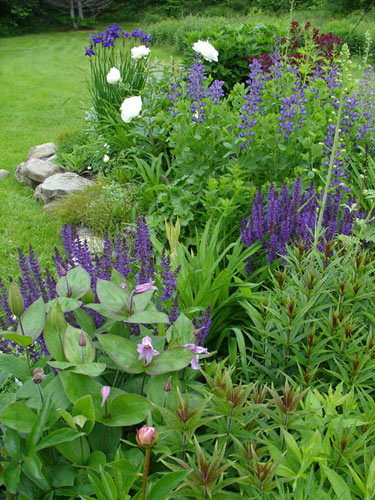
Spring Clean up is truly important to help plants develop for optimal show during our short growing and blooming season. If herbaceous perennials have to fight their way up through dead leaves and last year’s growth they may be stunted or misshaped.
If you did not clip back perennials and shrubs in the fall, it is best to get right out on one of those beautiful early spring days as soon as the snow melts and get clipping! At this time of year, the dead flower heads will be hard to cut, one reason I prefer to do this in the fall. Start by raking off the dead materials with a leaf rake, then clip off the tops back to the ground and haul everything over to your compost heap.
If you have deciduous or evergreen shrubs in your gardens, give them a shaping haircut now too (again, something I prefer to do in the fall ~ but you’ve got to start somewhere!)
I find a quick weeding is in order before the plants wake up fully. I leave the edging and mulching until mid to late spring. By all means, topdress with compost or manure now!
Pruning and clipping a plant is done for two reasons, asthetics(some plants are just more handsome ) and plant health. Cut back any dead or winter damaged branches with a good sharp pair of snips. Shape with a pair of hedge pruners. Cut any unwanted suckers from around the base of the plant too.
Make sure you cut a clean bed edge before you spread bark mulch around plants. Some folks prefer some sort of garden edging. They work well if you keep up with the grass creep. I prefer no edging, just a good dig spade. The bark mulch makes everything look pretty and fresh. It doesn’t have to be done every year either.
Handy tip: To determine the amount of mulch you might need; measure the bed width times its length (doesn’t have to be exact). Multiply that number x .30 . The answer you get is the cubic feet of the mulch you need – now divide that number by 27 and you will have the cubic yards. A pick up truck bed can haul 2 cy of mulch. Norpine can deliver 3 yd to 12 yd loads.

Once we’ve gotten by the spring rush, I like to take a day or two during the growing months to give special care to my gardens. Some of my tasks this time of year include;
Lets take a closer look at each of these chores:
Garden Pests
What are garden pests? Well, they can be anything that interrupts the healthy development of your beloved plants. I like to take an evening stroll through the gardens to look for signs of problems on the leaves and flower heads of my plants.
Rodents, insects, and persistant rainy fungus producing weather can all be pests!
Ever heard of IPM? Integrated pest management is the practice of efficiently treating only those pests that are harmful with the most minimal impact on the environment. This might mean something as simple as fencing to keep rodents out (rather than a chemical treatment with residual effects on the soils) It might mean introducing an insect that preys upon one that is desecrating your tomatoes rather than applying Sevin…And raking up dead leaf matter or pruning plants to help air movement instead of spraying a fungicide.
There are volumes to be written about actual practices, but just stop and think, once you’ve identified a pest, how to effectively reduce its negative impact in the least intrusive way. Your gardens will thank you, as will the children that will inherit your place!
Weeding, Edging, and Mulching
Weeding for me is therapy. Getting lost amongst the plants, pulling, smoothing the soil back…I don’t care much for indoor housekeeping, but I could weed my gardens all day long! I guess that’s why I do what I do!
After I’ve successfully hauled the weeds out of the beds, I recut the edge and make a pronounced trough that can then minimize the creep of turf back into the nice clean garden.
Depending upon the plants and my wishes, I might then topdress the bed with compost and or barkmulch…
Topdressing
We use commercial grade compost for ornamental beds, and organic compost for vegetable growing. The cost difference is huge and both forms of compost boost up the productivity of the soil to support healthy full plants.
For a quick addition to the plants, try a liquid fish emulsion for the soil. Its smelly but the flowers will sing your praises!

Perhaps the most important thing you can do to truly get a jump on the next growing season, fall garden cleanup is a must!
Plus it is a joy to work out amongst the plants on a cool crisp, bug free day! Give your gardens a final once over with your garden scratcher, rake up those leaves, and cut back your perennial tops. Hauling all this matter off now while it is upright and crisp is easy. Having it gone from the garden minimizes fungus growth, thereby minimizing the need for added fungicides or insecticides next year.
When spring crocus start to bloom, your whole garden will just shine, weed free and happy.
Topdressing with manure or compost now is also very easy – no perennials to work around. It will leach its benefits down amongst the plant roots where the nutrients will be stored for next years growth.
Now is a great time to trim up those bushes and hedges as well, Their winter shape will be neat and tight while they are dormant and the leaves will sprout in the spring uninterrupted.

I love when the seed and plant catalogs start to roll into my mailbox. Usually these start right off in January. About that time I have more hours of darkness to sit and dream and plan…
At this point, my planning is usually centered our other peoples landscapes. My gardens have become more than I can manage myself, so it’s not wise to be creating more for me to take care of. I use this time to learn about what is the latest greatest new development in the plant production world.
As things come around full circle, more and more people are rediscovering ‘Natives’. Often overlooked because they are too plain, scraggly, or just not showy enough. People are giving them a second look. Often there are hybridized versions of natives that give them greater appeal, while still providing plants that can thrive with existing water, light, and temperature requirements that their exotic cousins have trouble with. They often have fewer pest issues, can usually substitute very respectably for their imported cousins, and take much less care.
Following are some suggestions for native plants that I use frequently in my landscape designs:
Betula nigra — River Birch
Acer rubrum —Red Maple
Cornus sericea —Red Twigged Dogwood
Ilex verticillata —Winterberry
Sambucus canadensis —American elder
Tsuga canadensis— Canadian Hemlock
Vaccinium— Blueberry
Viburnum viburnum species – lots of choices
Ferns— many lovely choices
Perennials many perennial natives are often used in woodland gardens
Perhaps I will write a future article on woodland garden plants, they are my favorites!
But a few nice meadow choices would be:
Aster novae-angliae —New England Aster
Asclepias tuberose— Butterfly Weed
Eupatorium maculatum —Joe Pye Weed
Rudbeckia hirta— Black Eyed Susan
So as you dream, plan and scheme about a new landscaping project for the coming growing season, so points to ponder are (not in any particular order)
Garden Size ~ draw it out, do the math to determine costs and keep in manageable
Light requirements ~ Can be key for your plant selection. Fruit seldom produces in shade, and shade loving plants will never thrive in intense sun and heat.
Plant choices and selection ~ the most fun, and sometimes frustrating. Be careful to choose plants hardy enough for your climate.
As you work through your choices, bring your list of plants to your local, reputable landscaper or garden center for their pricing and added suggestions. We are making our orders now too and can often get all your plants for you at great prices. We will even deliver!


